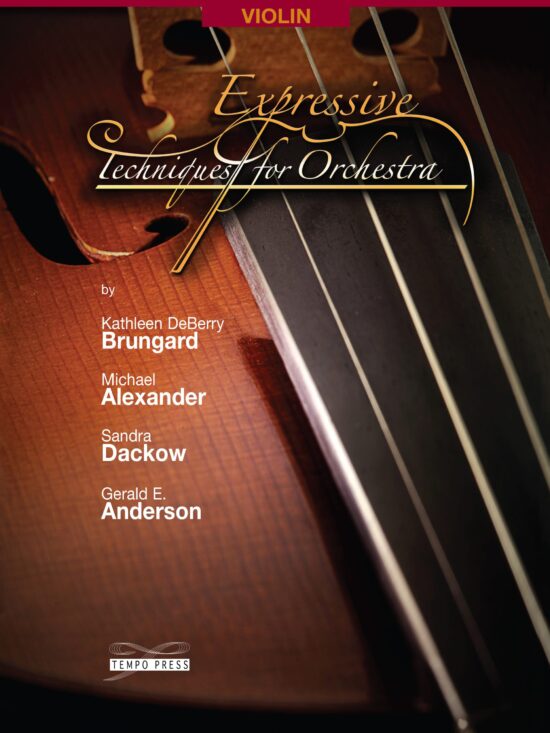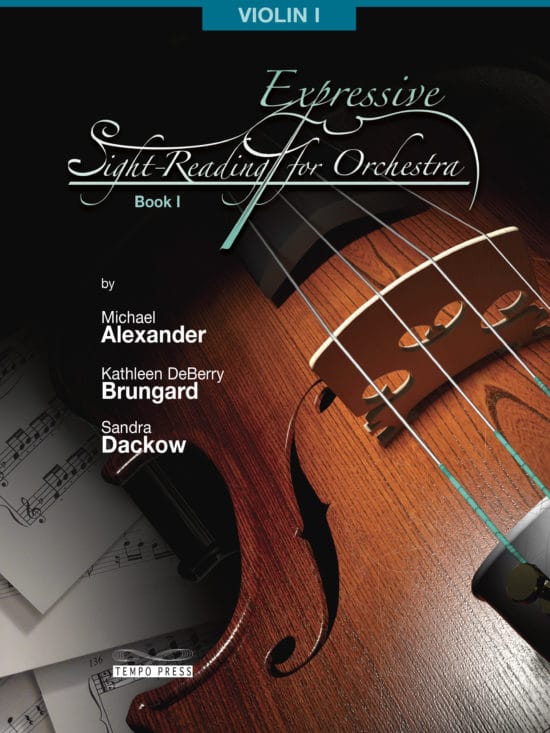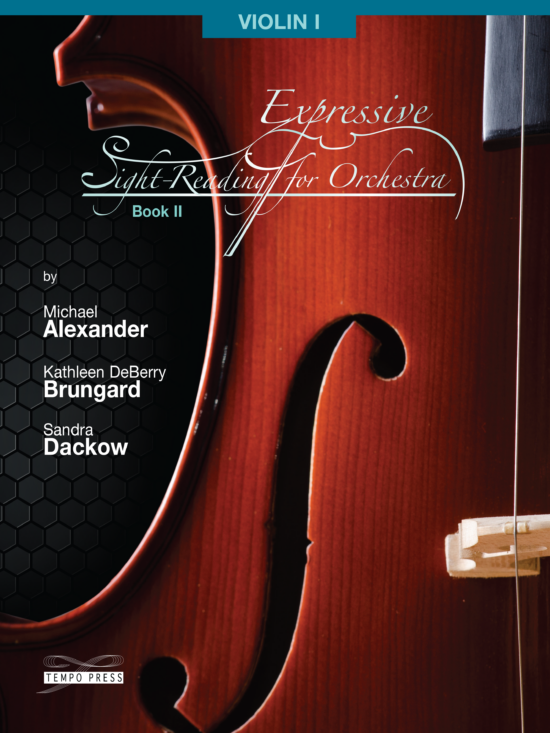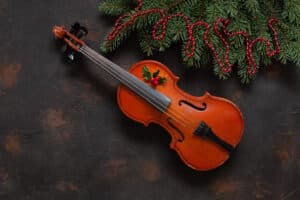
Tempo Press at the 2024 ASTA Conference
Thursday, March 21, 11:00am Ballroom D-E Vivace and ViBravo Orchestra Featured work: 1812 Overture Grade 3, String Orchestra, Peter Ilyich Tschaikowsky Arranged by Sandra Dackow
Bow arm technique is an important skill to develop in intermediate string players. These exercises, excerpted from Expressive Techniques for Orchestra, will have your orchestra sounding their best.
This exercise develops a rich, intense, mature sound that is really pulled and projected from the instrument. It also develops the sound in the often neglected area near the bridge, which is so necessary for playing with a full, clear tone quality while in the upper left-hand positions.
Place the bow as close to the bridge as possible. On the open A string, pull the bow stroke as slowly as possible. The sound will be ugly and tend to “crack” until students begin to feel the relationship between the bow speed, bow weight and bow placement. Play four strokes on each string (Violin/Bass: A D G E;
Viola/Cello: A D G C). As students master the tone production at this bow placement on each string, the bow speed should become slower and slower. Add scale fingerings on each string for further development. Eventually, work scale fingerings in the upper positions with the bow as close to the bridge as possible.
This exercise develops an even sound throughout the bow stroke through the use of pronation of the down bow and supination of the up bow. It allows for a greater range of expression in all parts of the bow.
Begin with down bows only. On the open D string, begin at the frog and pull a slow bow stroke to the tip. As the bow progresses past the midpoint, slightly rotate the right hand, so the arm weight is continuously and evenly applied to the outside edge of the forefinger. The right elbow should rise slightly. The wrist becomes quite deep as the bow nears the tip. Strive to keep an even volume of sound.
Once the down bow tone is evenly developed, connect with the up bow. On the upward stroke, retain the volume level in the upper part of the bow. As the bow progresses past the mid-point, allow the elbow to rotate downward with the wrist returning to a flat position. Strive to keep an even volume of sound.
Extend this technique to develop effective down bow crescendo and up-bow decrescendo. A faster bow speed will be needed past the mid-point on the down bow coupled with the pronation. A slower bow speed will be needed as the bow approaches the frog coupled with the supination.




Thursday, March 21, 11:00am Ballroom D-E Vivace and ViBravo Orchestra Featured work: 1812 Overture Grade 3, String Orchestra, Peter Ilyich Tschaikowsky Arranged by Sandra Dackow

The holiday season is a time for celebrating with friends and family, and what better way to do so than through music? If you’re a

Everything you need to know about Tempo Press at the 2023 ASTA Conference.

Everything you need to know about Tempo Press at the 2022 Midwest Clinic.
Tempo Press
A Division of Luck’s Music Library
32300 Edward Ave
Madison Heights, MI 48071
Ph: 800-348-8749
sales@tempopress.com

Be the first to know about new music, exciting news, deals and more!